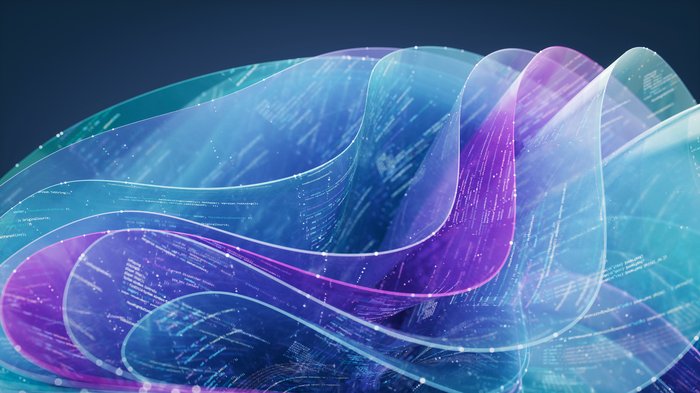Infinite Fleurs: Discover AI-assisted creativity in full bloom
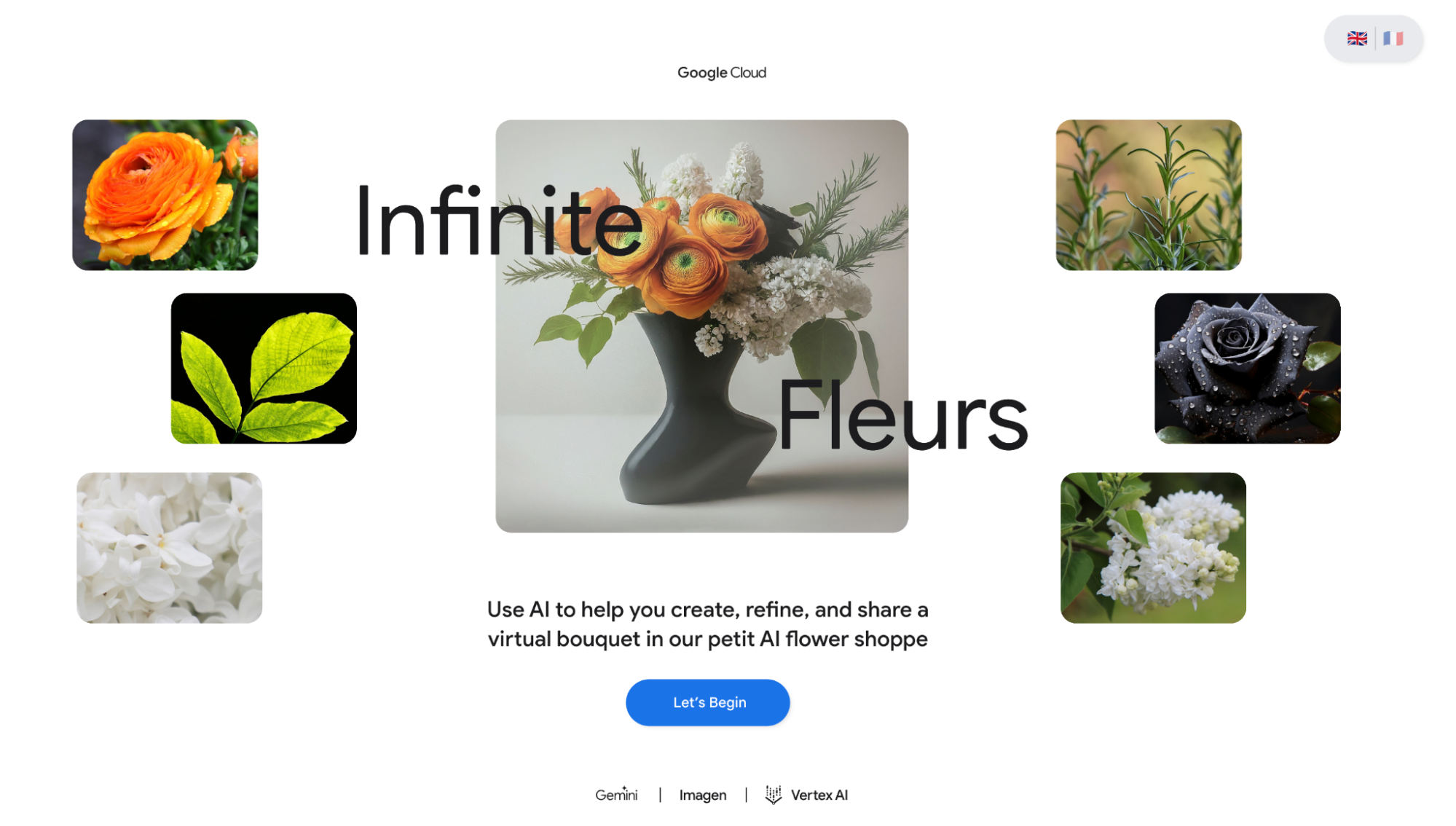
Christina Houghton
Group Lead, Demos & Experiments, Google Cloud
Mauricio Ruiz
Creative Lead, Demos & Experiments, Google Cloud, Google Cloud
Flowers have inspired some of the greatest artists of all time: Claude Monet, Georgia O’Keeffe, Takashi Murakami.
With Infinite Fleurs, a new AI experiment we debuted at the Cannes Lions International Festival of Creativity, we wanted to deliver a bouquet of creativity to anyone — all while demonstrating how an intuitive and attractive AI interface can help ideas and inspiration to blossom.
People often marvel at the unexpected outputs that generative AI has made possible over the past few years, whether that’s a beautiful image, inspiring text, novel code, or a hyper-real video. But the real magic lies in the interaction between human creativity and AI assistance. It’s about finding the right interface, one that feels as natural as walking into a flower shop and describing your perfect bouquet to a skilled florist.
It’s also about helping to nurture the often difficult process of creativity, the blank page or empty vase that we may not immediately know how t fill and can spend hours just getting started on a project.
Infinite Fleurs demonstrates how a few simple prompts, channeled through a thoughtfully designed AI interface, can jumpstart this process. Whether you’re arranging flowers or tackling complex creative tasks at your business, the key is to use AI to iteratively prune infinite possibilities down to an inspiring, manageable set of ideas.
For Infinite Fleurs, we start by asking a few short, personal questions, such as where you are from, your background and interests. For example, you might input that you’re a father of twins who likes Star Wars. The system, which has been tuned to make novel and inspiring suggestions, might come up with a fiery red and orange bouquet representing the twin suns of the planet Tatooine. It’s the kind of fun, unexpected idea that would take a very daring floral designer to come up with.
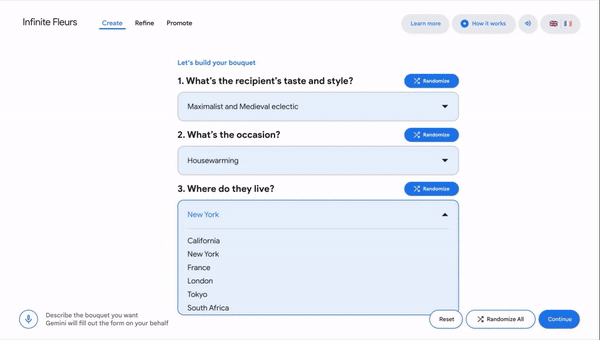

With just a few inputs, the demo creates an inspired, editable bouquet.
The same logic works in a business context, too, where you could envision creating a similar interface that’s instead trained on your organization’s existing assets, and then prompt users to take their work in a particular direction.
Infinite Fleurs showcases how AI can become a creative partner, helping to overcome the initial search for inspiration and guiding users through what’s always been an interactive, iterative process of creation.
A Multisensory Understanding of Data
You could say the seeds for Infinite Fleurs were planted at Google Cloud Next ’24. There, we introduced Infinite Nature, a first-of-its-kind demo that showcased the power of Google Cloud AI in uncovering surprising connections within the natural world. We wanted to do one better for Cannes with Infinite Fleurs, going beyond the surprise of nature to get to the nature of creativity.
At its core, Infinite Fleurs is a sophisticated machine learning system wrapped in a deceptively simple interface. Users engage with the platform through natural conversation — via voice or text — describing their dream bouquets with the same language they might use to address a skilled florist. But instead of a human expert, they're greeted by a concert of Google's AI models (Gemini Flash & Pro, Imagen 3, Speech-to-Text), each working behind the scenes to help bring the user's creative vision to life.
By simply describing their dream bouquets, users first tap into Gemini's vast knowledge of flowering plants. Tuned on a vast dataset of over 1 million flower images and metadata from the Global Biodiversity Information Facility (GBIF) and grounded in knowledge from Wikipedia, Gemini responds to the user's input with sophisticated reasoning across global botanical data and a robust knowledge of floral design, aesthetics, ecology, and world context.
As a multimodal model, Gemini not only finds relevant metadata, but looks at GBIF’s flower photos themselves — observing for colors and patterns that haven’t already been documented elsewhere in the dataset. This underscores the ability to prioritize the novelty of a creative output, whether that’s a bouquet or creating a new marketing asset.


Consider, for example, a user who requests a bouquet inspired by a Monet painting. Gemini can identify key motifs and colors from the artist's work, translating them into a floral composition. Thanks to the way we’ve tuned the system, it’s also meant to suggest unexpected pairings.
That could look like a dash of purple iris to echo shadows on a watery, or a spray of yellow daffodils that capture a play of light on a haystack, both familiar motifs for Monet. It can even prioritize blooms that are native to the user’s region, thereby emphasizing sustainable sourcing, should the user want to bring their bouquet home for real.
An AI interface to channel creative intuition
But Infinite Fleurs isn't just about generating unique ideas — it's about facilitating a fluid, iterative creative process. The platform's intuitive UI allows users to refine and adjust their designs in real-time, adding, removing, or swapping individual flowers, tweaking parameters for style and occasion, and exploring countless variations on a theme.
We used Imagen 3 Flash — our updated and more efficient image model — as a rapid prototyping tool to bring these ideas to life in stunningly realistic detail, allowing users to see the immediate impact of their creative decisions. The ultrafast, lightweight nature of our Flash models was of particular benefit for a demo being run at a beachside booth at the Cannes Lions festival. It’s a reminder of the value of having lots of model variations to choose from to meet varying enterprise needs.
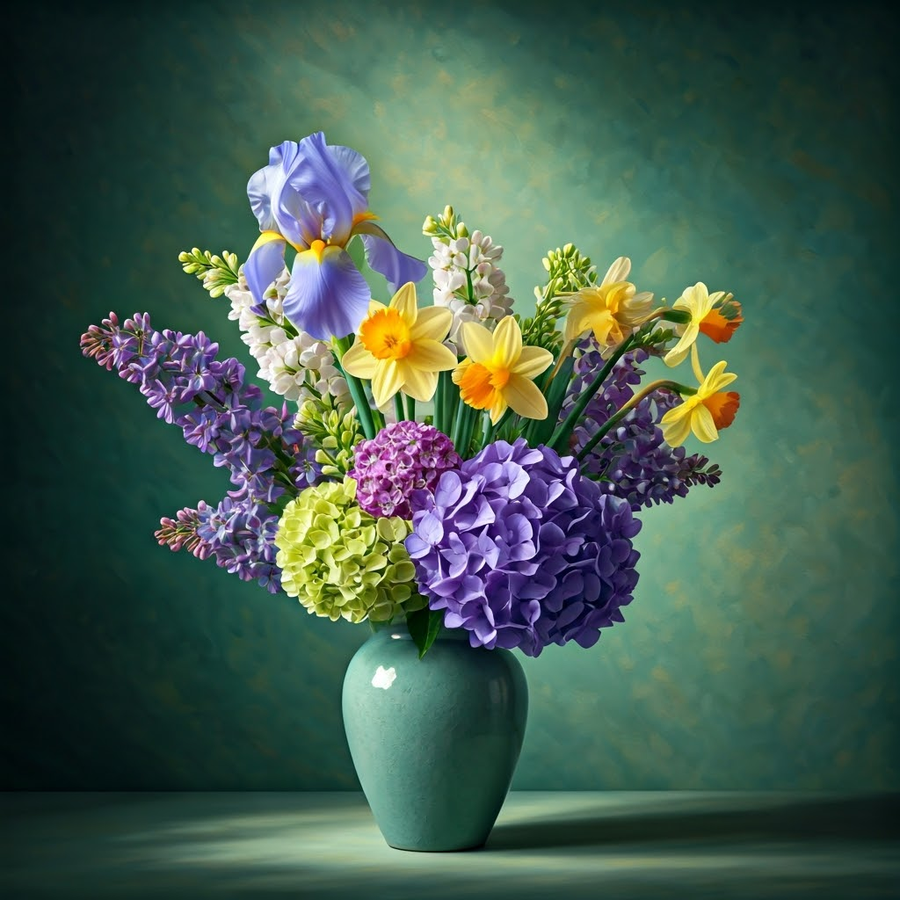

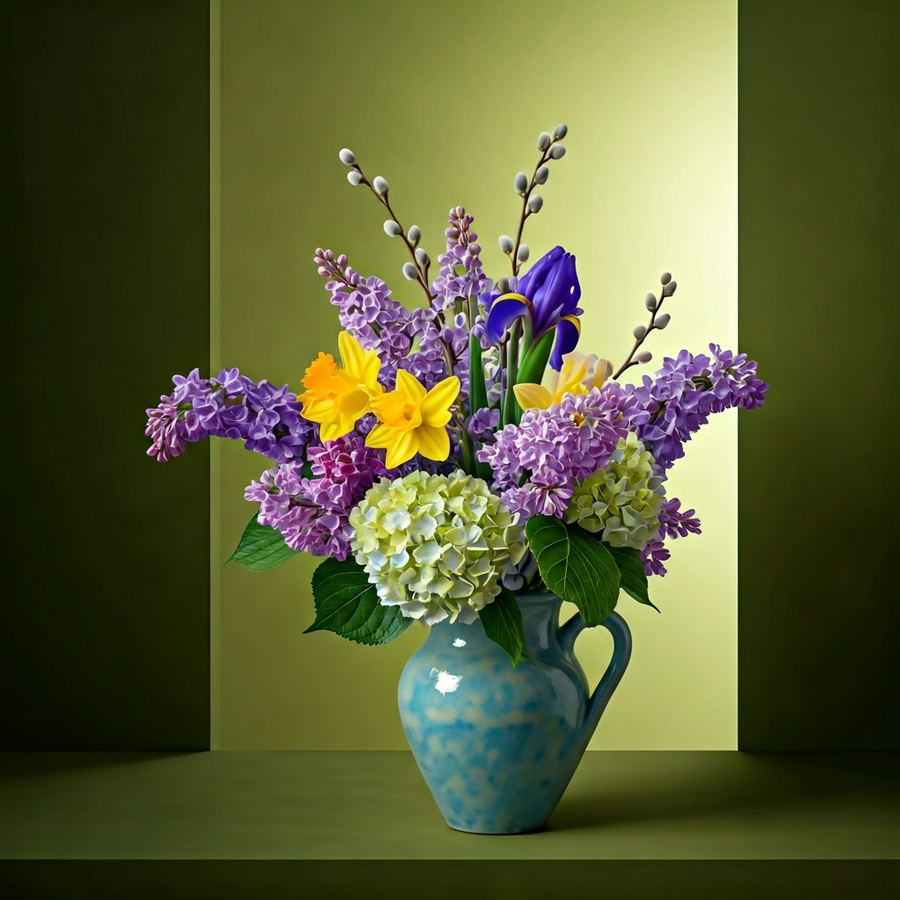

“A Gift from Giverny,” proposed by Gemini and visualized by Imagen 3.0 in Infinite Fleurs
The seamless interplay between human intuition and AI-generated insights is what sets Infinite Fleurs apart. Rather than attempting to replace human creativity, the platform aims to further inspire, enhance, and accelerate it, providing a powerful set of tools that can keep pace with the rapid-fire nature of the creative process.
Opportunities taking root across industries
The implications of this demo extend far beyond the world of flower shops:
- Advertising and marketing: Personalized content creation and curation based on user preferences and feedback.
- Media: Assisted content creation and categorization for improved curation and retrieval.
- Retail: Multimodal search for finding similar items and real-time product suggestions.
- Science and healthcare research: Identifying patterns in vast datasets, uncovering new species or drug components, or revealing hidden connections.
- Travel: Multimodal search and discovery for destinations, hotels, landmarks, and activities.
That just scratches the surface. The possibilities are vast.
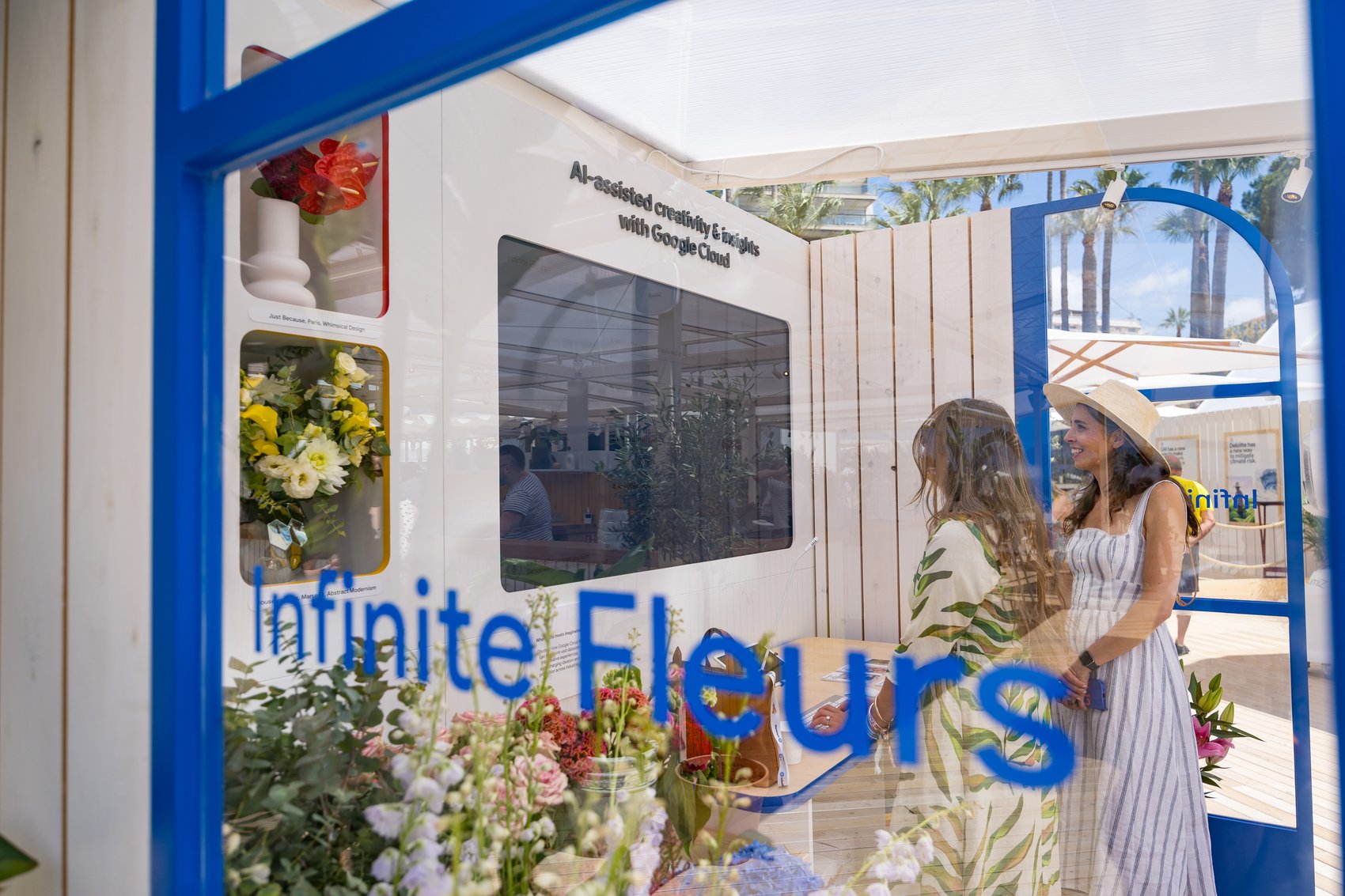

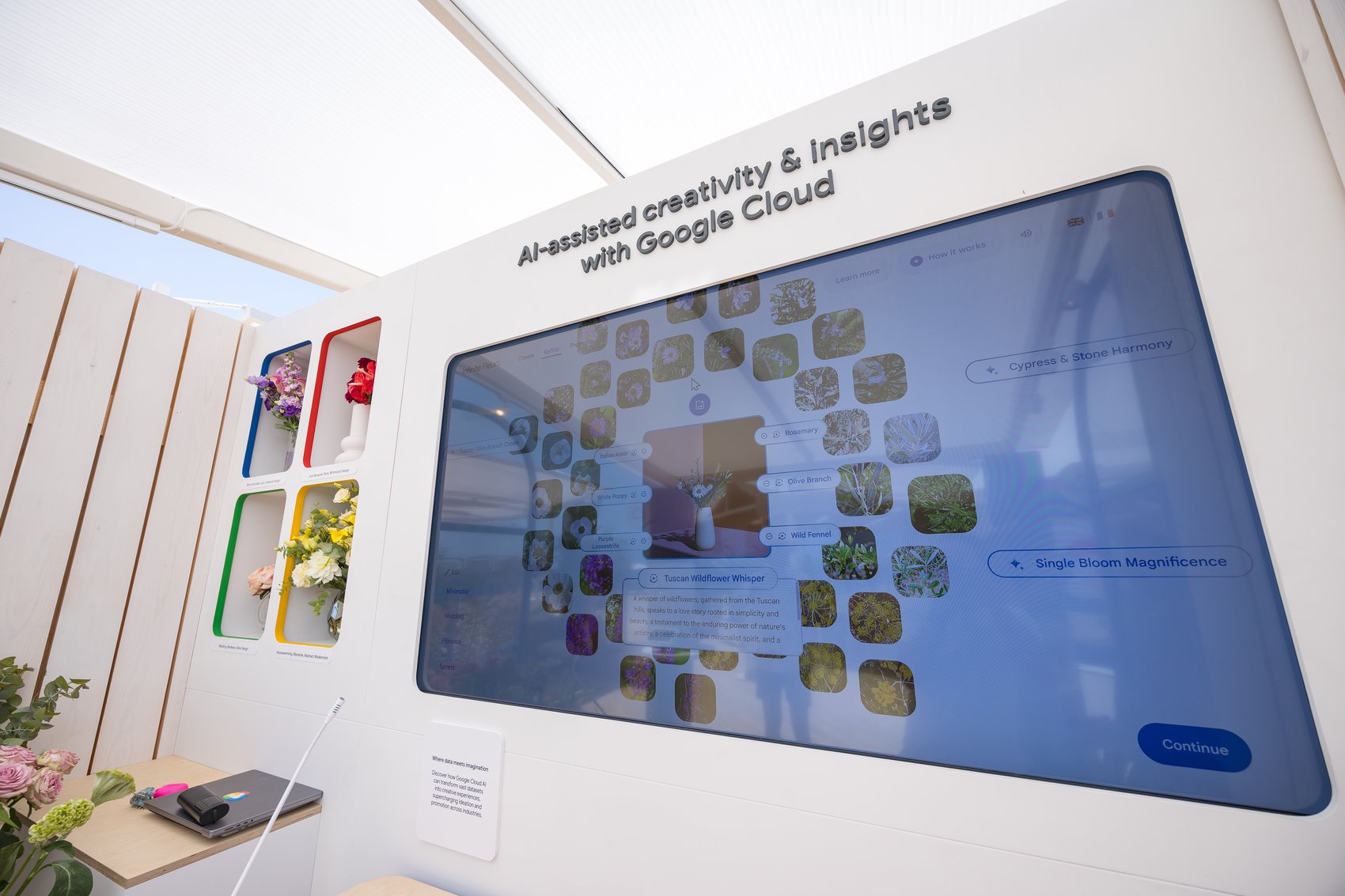

The Infinite Fleurs installation in Cannes last month.
The Future of AI-Driven Creativity
Infinite Fleurs is just an experiment. But it offers a tantalizing glimpse at the incoming world where human creativity is augmented and accelerated by artificial intelligence.
The arrival of AI-driven creative tools marks a profound shift in the relationship between human imagination and machine intelligence. It's a future where creators can collaborate with AI to bring their wildest imaginings to life. And of course, as we venture into this uncharted territory, we'll need to approach each step with a spirit of openness, curiosity, and care.
So if you find yourself in Cannes this summer, make a point to stop by Infinite Fleurs. Strike up a conversation with Gemini, and see where your combined imaginations might lead. The future of creativity is in bloom, and you won't want to miss it.
The team would also like to thank Kaz Sato, Noah Pisner, and Lauren Kehoe for their contributions to this post and the Infinite Fleurs project.
